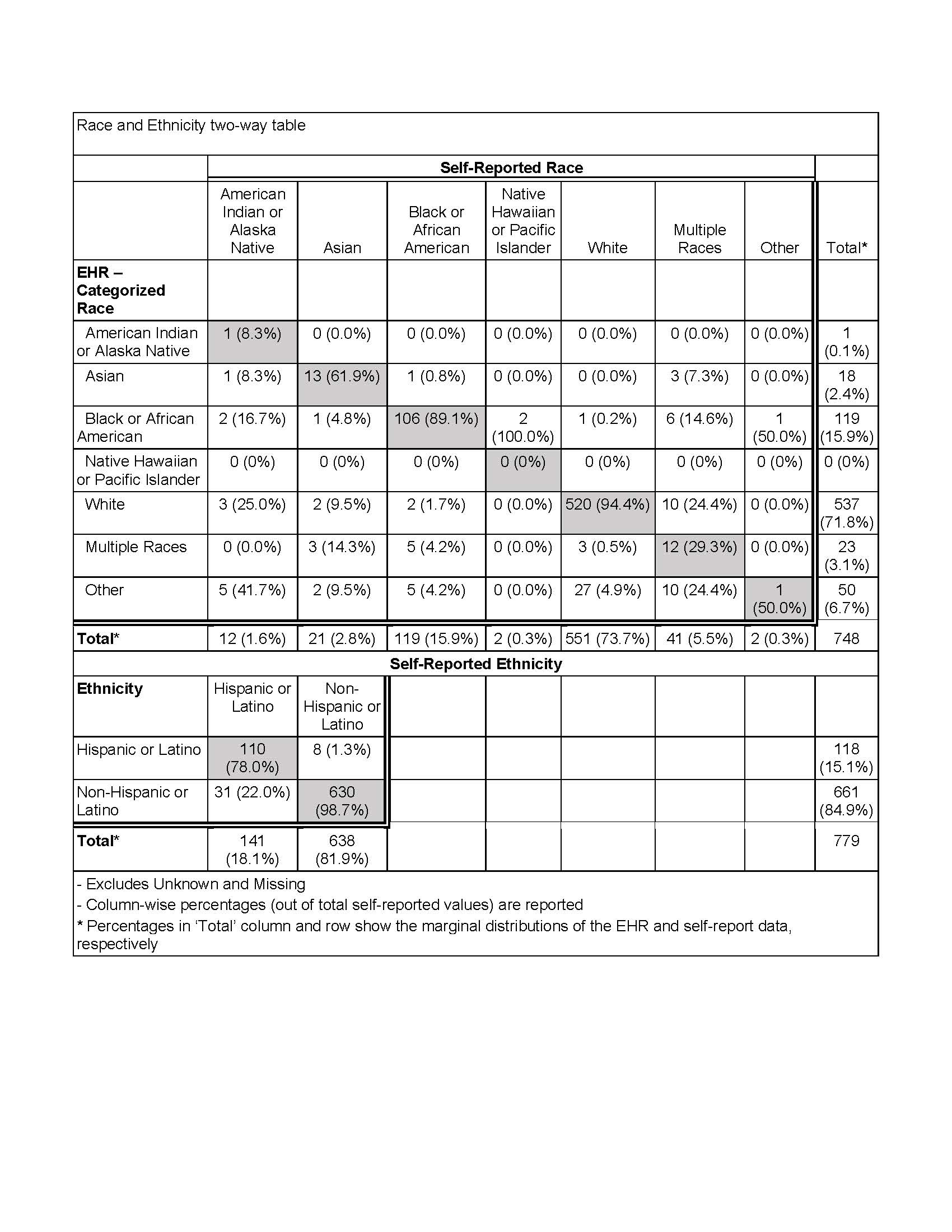Health Services Research
HSR 3: Social and Medical Complexity
589 - Concordance of Electronic Health Record-Captured Race and Ethnicity with Parental Report Among Children Seeking Care in Pediatric Emergency Departments
Publication Number: 589.319

Monika Goyal, MD, MSCE (she/her/hers)
Associate Professor of Pediatrics & Emergency Med
Children's National Health System
Washington, District of Columbia, United States
Presenting Author(s)
Background:
As we strive for improved health care delivery, there is increasing attention on equity as a quality metric. The electronic health record (EHR) provides readily available data for quality improvement and research. The accuracy of the EHR in the capture of patient reported data, such as race and ethnicity, has recently been called into question. Although standard of care is for self-identification, race and ethnicity may be captured in the EHR as the recorder’s perception rather than the patient’s self-identification.
Objective:
We sought to measure concordance of race and ethnicity captured within a multicenter EHR registry with prospectively collected race and ethnicity.
Design/Methods:
We performed an analysis of the IMPROVE study, a prospective cohort study of children 4-17 years discharged from 6 children’s hospital EDs with a diagnosed fracture. Demographic data were extracted from the PECARN Registry and linked to data prospectively obtained from parents via text-messaging. Raw race and ethnicity data from the two data sources were categorized by independent reviewers. We compared percent agreement of EHR-recorded race and ethnicity with parent report of their child’s race and ethnicity (reference standard).
Results:
Of the 748 enrolled parents that provided self-reported data on race, 551 (73.7%) self-identified as White, 119 (15.9%) as Black, 41 Multiple Races, 21 Asian, 12 American Indian/ Alaskan Native, 2 Native Hawaiian/Pacific Islander, and 2 (0.2%) Other. (Table) Overall agreement for race was 87.3% (95% CI 84.7%, 89.6%) with kappa of 0.71 (0.67, 0.76). Among the most represented racial groups, agreement was 94.4% for those identifying as White and 89.1% for those identifying as Black. Of the 779 enrolled self-reported data on ethnicity, 141 (18.1%) identified as Hispanic. Overall agreement for ethnicity was 95.0% (93.2%, 96.4%) with a kappa of 0.82 (0.77, 0.87). Higher proportions of disagreement were in racial groups with fewer enrolled patients: self-identified Native Hawaiian/Pacific Islander miscategorized as Black (n=2, 100%) in the EHR; American Indian/Alaskan Native miscategorized as Other (n=5, 41.7%); and Multiple Races miscategorized as Other (n=10, 24.4%)
Conclusion(s):
This multicenter study of children suggests substantial overall agreement for race and ethnicity data captured in the EHR when compared to parent-report. However, misclassification occurred in 11% of Black and 7% of Hispanic patients. Misclassification was particularly common in less-represented racial groups. Future research should explore methods to improve capture of race and ethnicity data.
